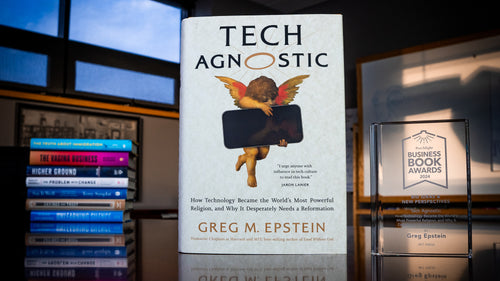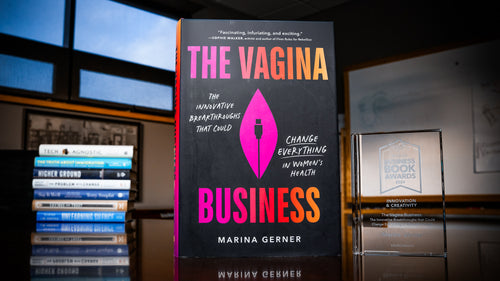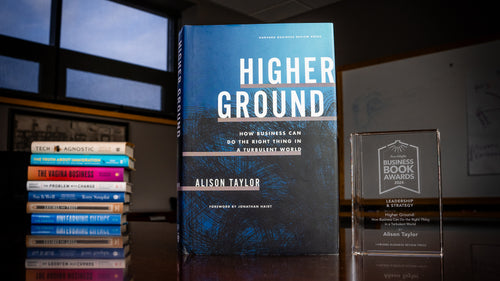Excerpt from The Ultimate Sales Machine

The following excerpt is taken from Chapter 4 of The Ultimate Sales Machine: Turbocharge Your Business with Relentless Focus on 12 Key Strategies. Author Chet Holmes offers this advice: Instead of trying to master four thousand strategies to improve your business, zero in on the few essential skill areas that make the big difference.
Chapter 4: Becoming a Brilliant Strategist
How to Get Up to Nine Times More Impact from Every Move You Make
As we've already established, it's harder than ever to get in front of a potential buyer, so when you finally get your company in front of that buyer, you need to maximize what you can accomplish in that moment. You need to think and plan strategically. This chapter also shows you how being a strategist will make it easier to get to that customer in the first place.
To make sure you understand the difference between a tactic and a strategy, here are some simple, yet essential, definitions. A tactic is a method or technique used to achieve an immediate or short- term gain. You run ads or send direct mail pieces to get leads. You go on a sales call to make a sale. You attend trade shows to meet with potential buyers and get more leads. These are examples of tactics.
A strategy is a carefully defined and detailed plan to achieve a long-term goal. In business, a strategy is the overall impact, the ultimate position you would like to achieve in the market. To think like a brilliant strategist, you will design and combine your tactics with the long- term strategy in mind. In addition, you will constantly ask yourself and your team, "How many strategic objectives can we accomplish with each tactic?" In this chapter I'll show how every tactic can potentially achieve 10 or more strategic objectives.
In my experience, there are three types of executives. A full 90 percent are what I call "tactical executives," while 9 percent are what I'd call "strategic executives." And only 1 percent-- the most effective executives--possess the rare combination of both tactical and strategic abilities.
Tactical executives think only in terms of making the sale for today. They don't understand strategy. If you tell them that it's twice as difficult today as it was 10 years ago to get an appointment with a prospect, they will think of ways to make the sales team try twice as hard. Strategic executives will often look at the situation from a global perspective and see if they can develop some high- level strategy that might help to solve the problem. These executives are brilliant. They create concepts, ideas, and strategies that most would never develop. But strategic executives are not good at, or interested in, tactics. Hence, I've seen many big ideas that never come to fruition because strategic executives fail in the implementation of their big ideas.
Now let's talk about the top 1 percent. The executive who thinks both tactically and strategically can develop the big ideas and the big strategies and also use discipline and determination to see those brilliant strategies implemented at the tactical level. And just for the record, the second type of executive, the strategist, can often be paired with a strong tactician and be very successful. However, the strategist may have to keep explaining and selling his or her ideas again and again to the tactical executive.
In my experience a purely tactical executive does not grasp strategy easily. Here's a good example: I have a client who has just started a brand-new magazine. The salespeople find it nearly impossible to reach the advertisers they want in the magazine. This is a market with 80- plus competing advertising vehicles. To meet this challenge, I changed the titles of the salespeople to sound less salesy-- for example, "director of corporate communications." This enabled a salesperson to call a prospect and say something like: "Hi. I'm Jennifer Smith, the director of corporate communications here at XYZ Magazine. As part of our ongoing effort to continually serve the market, we like to learn more about other companies in our market. I also interface with the editorial staff here, and I'm always on the lookout for potential stories for our magazine. Tell me, how long has your company been in business?"
This approach enables the sales staff to achieve the strategic objective of establishing solid relationships within the market and getting into The Ultimate Sales Machine discussions that build rapport. After they build rapport, the salespeople are able to softly segue into talking about advertising. "One of the other things I do for the magazine is look for products or services that our readers might be interested in." This enables the salespeople to then get into dialogue about advertising and work their way into a technique you're about to learn called "education-based marketing," creating an opportunity to educate prospects. This is a long- term, strategic approach to the sales process.
But here's the point: A tactical salesperson would say, "Why do I want to do all that when all I really want to do is sell them advertising?" The strategic executive would understand that this approach would get you into an actual conversation that can build some rapport and interest before trying to immediately sell the prospect an ad. The strategist looks at every challenge as an opportunity to out-think competitive approaches. This will be demonstrated 10 more ways during the upcoming pages.
Let's go deeper.
When you or your salespeople get in front of a client, what do you want to accomplish? What are your strategic objectives?
When I ask executives that question, most of them reply tactically: "I want to make a sale." Then I ask them to think strategically: "What else do you want to achieve?" And they say, "What else is there?" The conversation goes like this:
ME: Would you like to be respected?
THEM: Well, of course, I'd like to be respected.
ME: Would you like to be trusted?
THEM: Well, of course, I'd like to be trusted.
ME: Would you like referrals?
THEM: Well, of course, I'd like referrals.
ME: Would you like a preemptive strategy for when your competitors try to undercut your pricing?
THEM: Well, yeah, that's a great objective.
ME: Would you like to be perceived as an expert?
THEM: That could be valuable, yes.
ME: How about influence? Would you like to have influence in that meeting?
THEM (the tacticians): What does that mean?
ME: Hang with me here a second. How about brand loyalty? Is that important?
THEM: Heck, yes.
ME: What about some urgency to buy now? Would that be a good thing?
THEM: Yes. That would be good.
If you even think about these objectives, doesn't it automatically change how that meeting might go? So much of the sales process and potential strategic objectives are left up to the individual salesperson--every time. What if you, as the leader of your company, could devise a way to accomplish all those strategic objectives, and do them every time anyone in your company is in front of a buyer? How much more powerful would you be over your competition?
Let's go deeper.
Increasing Sales 600 Percent by Adding Just One Additional Strategic Objective
Two furniture stores open up in a town on nearly the same day. One is totally tactical and the other is very strategic. If you go in to look at couches in store 1, the salesperson tries to sell you a couch. Tactical. Over a four- year period, this store grows at about 10 percent per year, mostly driven by the increasing costs of furniture.
In store 2, of course, they try to sell you a couch, but the management constantly trains the salespeople to sell the store. "First time in our store? Well, let me tell you about it." And while the salespeople are on their way to the couches, they pitch the heck out of that store. They tell you about the history, the owner's devotion to service, why they have lower prices than their competitors, how well trained they are on furniture construction, and how that benefits you as the consumer.
The purpose of this buyer education is to create brand loyalty. Over time, this store builds a large and loyal following of customers who automatically come there first when they are interested in any type of furniture. When you shop for furniture, you probably go to various stores with little or no brand loyalty. Or you may see a sale in the newspaper and go because of the sale. But if you had a relationship with a store that stood behind its product like no other and could thoroughly explain the differences in furniture quality (there's quite a bit to know) and even offered expertise in decorating, you might have an affinity, a loyalty, a preference for that particular store. When you needed furniture, you would go there first because of the relationship that it purposefully built with you. Buyer education paid off handsomely for one of our two new furniture stores. Over a four- year period the tactical store remained a onestore location, while the strategic store opened six locations.
People will even pay more if they perceive there is a greater value or a deeper reason for buying from one provider over another. I cannot tell you how many times I've helped companies step up out of the commoditizing world in which they live by being more strategic. In a moment I'll have you do an exercise that will pound this idea home. Let's do a little more setup so you get as much as possible out of the exercise.
Here's a question I want you to answer: when your buyers look to purchase your type of product or service, how much of an expert are they? When I ask this question in front of a large audience, every one pretty much admits that in any given purchasing situation, the average buyer is not much of an expert. For example, you are probably not much of an expert at all about carpet cleaning, are you? If most of your buyers are not experts at what to look for in your product or service, this opens a gaping strategic opportunity for the brilliant strategist to capitalize on.
I call this the science of setting the market's buying criteria. Basically it means that every buyer can be taught how to be a better buyer of your type of product or service. Using the carpet cleaning example, the buyer calls in with loose or few buying criteria at all. The salesperson then resets the buying criteria by educating that consumer about the EPA studies on the importance of clean carpets to the quality of the air and life in your home. You can do this for your company with profound results. To further explain, let me introduce you to a powerful concept that really tunes up the strategist in all of us:
The Stadium Pitch
Imagine that I could put you on stage in a giant stadium where the entire audience is composed of your most perfect prospects, giving you the opportunity to present to them all at once.
First question: Are you ready right now? Could you walk out on that stage and present to every one of them and do it perfectly?
I give speeches all over the world where I ask this question. Usually about three to six people raise their hands (out of 1,000 in the audience). When I drill down with the few who raise their hands, I find that they are usually not ready, but sometimes I find someone who is ready. They've got a killer stadium pitch and it's expertly tuned. I compliment them, saying, "Wow, you are really prepared." The response comes back: "Thank you for the compliment, but I have to thank you because I got one of your training products years ago."
The audience will laugh, thinking the person has to be working for me, but, boy, does it make a point about the strategist. As you will soon see, a well- prepared stadium pitch will enable you to attract a lot more prospects and close a higher percentage of tire kickers into actual buyers.
The first thing you need to think about and plan is who the ideal person would be in your audience. For example, my client who sells products for manufacturing production lines would work for months to build their case with the production manager-- the one on the front line of production-- only to have a higher- level executive say no to the increased costs. So I shifted their entire strategy to selling to the owner or CEO of the company. So in their stadium, they would want CEOs. Who is in your stadium, ideally? The challenge is how well you can keep that person in the audience.
Chapter continues...
This excerpt used by permission of US Penguin Group. From Chapter 4 of The Ultimate Sales Machine by Chet Holmes.



